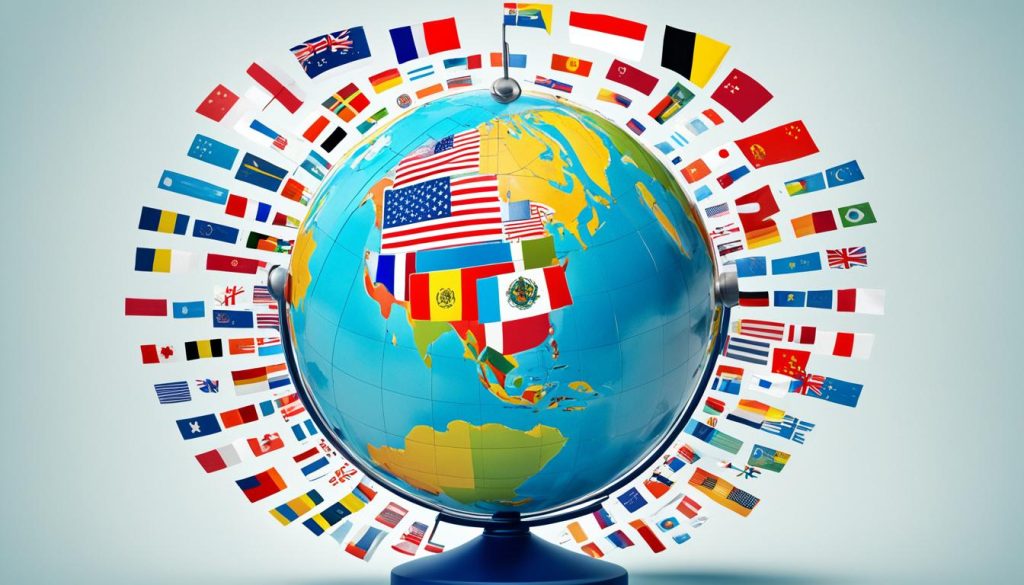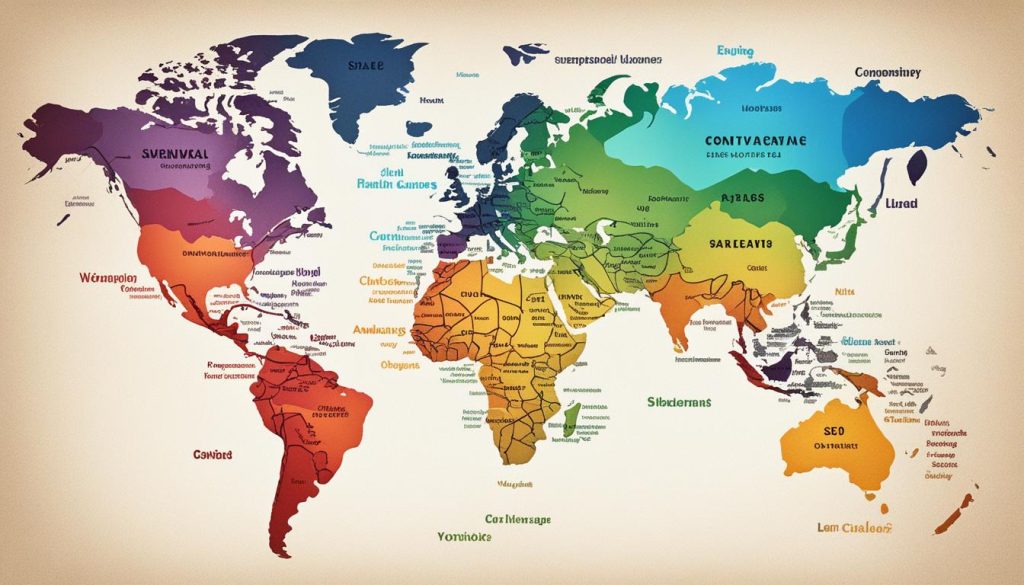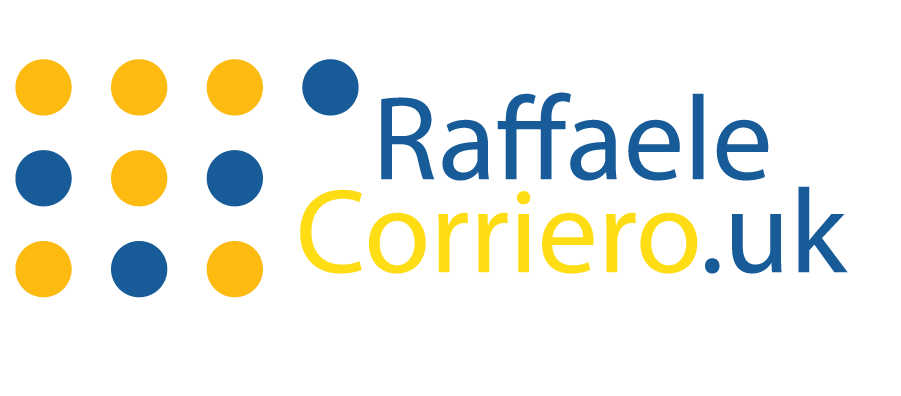Did you know that over 70% of internet users do not speak English as their first language? This fact shows a big chance for businesses to reach the global market. To do this, companies must use multilingual SEO strategies. But, it’s more than just translating words. It’s about knowing how people search in different languages. And making sure they find the content that’s right for them, based on where they are.
In London, Estefania Veira, a marketing campaign manager, shares an insight. She believes that great content is useless if language barriers block access to it. The key is an SEO strategy that fits the search patterns of international audiences, in their own languages. In Lisbon, Allan Formigoni, who manages content and email marketing, also highlights customization. He believes it’s crucial in marketing that speaks directly to people in their native languages.
Thanks to Google Search, the language of search results can be identified automatically. So, providing content in the languages your users prefer is very important. By following Google’s recommendation, offering varied language content in a specific area can do wonders. It improves the experience for users and increases natural website visits.
Key Takeaways
- Understanding your audience’s search habits in different languages is crucial for successful global SEO optimisation.
- Brilliant content needs to be accessible across language barriers to be effective.
- Adapting SEO strategies is vital to align with native language preferences.
- Utilising Google’s multilingual capabilities can elevate user experience and drive organic traffic.
- Multilingual SEO requires more than translation; it encompasses cultural and contextual nuances.
Understanding Multilingual SEO
Multilingual SEO is crucial for companies wanting to reach different linguistic groups. It involves optimising a website in several languages to increase organic reach globally. By doing this, businesses make sure search engines can find their translated content, leading it to the right audience.
Definition and Importance
Defining multilingual SEO goes beyond just translating content. It aligns optimisation strategies with the diverse search habits of various language speakers. Through localisation SEO, companies can adapt their content for specific languages, achieving wider organic visibility. This is key for improving user experience and attracting traffic from different linguistic regions.
Differences Between Multilingual and International SEO
Multilingual SEO means making websites appealing in several languages, while international SEO focuses on specific countries or regions, not just language. Multilingual SEO ensures search engines properly index translated content. On the other hand, international SEO may focus more on location-specific factors. An example is Nike’s EMEA SEO lead, Joshua Lohr. He successfully manages e-commerce in multiple languages, showing the importance of localisation SEO.
Building a Multilingual Online Presence

Creating a multilingual online presence is more than translating text. It’s essential to add cultural touches and local sayings on digital platforms.
Website Translations
Effective website translation is not just changing words. It involves understanding cultural nuances for each audience. This approach makes sure the message fits well with local readers, increasing their interest and loyalty.
Localising Social Media
Adapting social media for different areas is crucial. Each platform must match its users’ cultural and language preferences. This involves adjusting content to include local humour, sayings, and culture, which helps grow engagement and support for the brand.
Localising Advertising
Successful ads must adapt to local cultures. This means knowing how people in different regions behave, their holidays, and values. This strategy avoids misunderstandings and strengthens connections with the audience.
Choosing the right words, like ‘cookies’ in the US or ‘biscuits’ in the UK, is key in localisation. Paying attention to these details in ads and social media makes users feel seen and important, boosting brand success.
Factors to Consider for Multilingual SEO
When diving into multilingual SEO, you should consider several vital points. One key aspect is targeting pages to specific languages and locations. This makes sure users see content in their preferred language that’s also relevant to where they are. It boosts both user experience and search engine rankings.
Correct Pages for Language and Location
It’s crucial that users get pages suited to their language and where they live. By understanding cultural differences in keywords, your content connects better with audiences. Estefania Veira from London points out that tailored content overcomes obstacles for global users.
Location-Based Keywords
Optimising for local search terms requires attention to the subtle differences within regional languages. For example, UK and US English have distinct vocabularies which affect search trends and keyword competition. Nermeen Habashy from B.TECH notes that targeting Arabic speakers in certain areas could mean facing less competition. This is due to unique search habits and differences in search volume.
Creating Unique and Localised Content
Having a unique content strategy is vital for reaching worldwide audiences. Making sure translations are high quality is key. It helps keep your content true to each culture and relevant for different markets.
Importance of Quality Translations
Good translations are a must for successful content localisation. They adapt your message to fit cultural nuances. This keeps your brand’s original feel and supports cultural authenticity in every translation.
Using Professional Translators Over Automated Tools
Choosing human translators over machines makes a big difference. Humans understand context, slang, and cultural details better. This helps your content connect better with local people, avoids mix-ups, and keeps your brand’s image strong.
Choosing the Right URL Structure
Having a good URL structure helps search engines understand and rank multilingual websites better. Using SEO-friendly URL techniques boosts visibility and improves user experience.
Choosing between top-level domains, subdomains, or subdirectories involves considering domain optimisation and how easy they are to manage.
Top-Level Domains, Subdomains, and Subdirectories
For language-specific URLs, options like www.mysite.fr for French domains or fr.mysite.com for a subdomain show language and regional focus. Using subdirectories, such as www.mysite.com/fr/, keeps things organised and SEO-friendly.
Pros and Cons of Each Structure
- Top-Level Domains (TLDs): They’re trusted by locals but can be costly and hard to manage.
- Subdomains: These are easier to create but might weaken domain authority.
- Subdirectories: They’re the easiest for SEO-friendly URLs and optimising multilingual sites. However, they might not show the site’s regional focus well.
Implementing Hreflang Tags

Many websites with multiple languages struggle to show the right version of their content. Using hreflang tags helps solve this problem and makes content more targeted for search engines.
Importance of Hreflang Annotations
Hreflang tags help tell apart content in different languages, avoiding SEO problems. These tags let search engines know which content to show based on the user’s language and location. It improves how users experience the site and keeps the site safe from being penalised for having the same content in more than one language.
How to Add Hreflang Tags
Adding hreflang tags correctly needs a few steps. You can add them to your page’s HTML header or an XML sitemap. Here’s how to do it properly:
- Identify all the different language and regional versions you have.
- Add hreflang values in the
<head>part of your webpage. You need to specify both the language and the region if needed. - Make sure each hreflang tag points exactly to the right URL for its language and region.
- Check everything over to make sure it’s all correct and consistent, to keep SEO issues at bay.
By taking these steps, websites with content in more than one language can get better at targeting their content in search engines. This leads to users seeing the right language version, which helps with SEO too.
Optimising Metadata and Metatags
Optimising metadata and metatags is key for a good multilingual SEO plan. They help search engines understand your site better. This leads to better display in search results.
Translating Metadata Descriptions
Translating metadata descriptions makes your site more relevant in different languages. It’s important for strong search engine results. Use local keywords for SEO metadata localisation. This makes your site reach the right people effectively.
Metatag Titles and URL Translation
Metatag titles also need careful translation. Multilingual title tags boost your click-through rates by making content recognizable. Translated URLs are vital as well. They help search engines categorize your content better.
They also improve site navigation for users by providing clear URLs in their language.
Best Practices for One Language Per Page

Keeping just one language on each webpage is vital for good multilingual SEO. It makes communication clear and keeps confusion away. Mixing languages can confuse readers. Sticking to one language improves the page’s visibility and makes it easier for users.
Avoiding Side-By-Side Translations
Having translations side-by-side can confuse and overwhelm visitors. It’s hard for them to concentrate. It’s better to have separate pages for each language. This makes the site easier for search engines to understand and rank. It also makes it simpler for people to find what they want quickly in the language they prefer.
Ensuring Clear Navigation
It’s crucial to have clear navigation on multilingual websites. All navigation tools should be translated into the page’s language. This improves the site’s usability and helps search engines index it better. Good navigation boosts SEO and enhances the user’s experience.
Using strategies for clear page language optimisation helps each page stand out. This makes the website more organised and user-friendly. It’s key to attract global traffic and offer a great experience to users in different languages.
Localising Hidden Content
Making the unseen parts of a website accessible is key to a good content localisation plan. These parts, often missed, link the user smoothly and make sure search engines can find the site easily.
Metadata
Metadata helps search engines find and understand your site. Making meta descriptions and tags clear in all languages helps your site’s ranking. It makes it easier for people worldwide to find the right content in their language.
Alt Text for Images
Translating alt text makes images accessible and ensures search engines read them correctly. This way, images show up in search results correctly, making websites better for everyone, including those who are visually impaired.
Error Messages and Forms
Optimising forms for every language is crucial. By localising error messages and form labels, users navigate forms without trouble. This improves their experience and engagement. It makes sure everyone understands the website, no matter the language.
Location-Based Keyword Research

It’s crucial for businesses focusing on different areas to do deep keyword research. Getting to know the words and phrases that change with the place can make a big difference in SEO. This method improves how users see your site and helps it rank better by matching local tastes.
Different Terms in Different Regions
One important part is knowing the different words used in various places. For example, the US says ‘cookies’, but the UK calls them ‘biscuits’. It’s important to track these changes to make sure the content fits well with the local crowd.
Competition and Search Volume
It’s also key to understand how tough the competition is locally and how many searches there are for the keywords you’re targeting. Looking into these details lets businesses find areas that aren’t too crowded but have a lot of interest. This leads to better keyword choices, driving more visitors and raising the site’s profile in certain locations.
Improving Search Engine Visibility
Multilingual websites often face issues with search engine visibility. This is due to challenges such as duplicate content. By using structured localisation strategies, their visibility can be greatly improved.
Overcoming Poor Search Engine Visibility
To boost multilingual SEO, implementing effective techniques is key. This includes the correct use of hreflang tags. These tags help search engines show the right language version to users. This improves search engine rankings in different regions.
Addressing Content Duplication Issues
Content duplication can harm search engine rankings. It’s crucial to use strategies like hreflang tags to address this. These tags guide search engines on which version is correct. This avoids penalties and boosts multilingual SEO visibility.
Implementing Effective Localisation Strategies
Effective localisation strategies help you reach people worldwide. To succeed, mix deep market research with lasting practices. Let’s explore the key steps to do this right.
Analysis and Market Research
To start, do detailed market research for SEO. Knowing the cultural and language details of each market is key. This means finding out what words people search for and what competitors do.
Long-Term Strategies
For SEO that lasts, plan for the long term. This means keeping up with changes in how people talk and predicting what will be popular later. Long-term thinking helps your content stay useful and ranked well.
A sustainable approach takes care of what people need now and changes as they do. This keeps your content always relevant.
- Conduct thorough market analysis for SEO
- Develop a sustainable localisation approach
- Focus on long-term SEO planning
SEO for Multi-Language Companies
When you go global, you need an SEO plan tailored for many languages and cultures. Choosing the best SEO agency is key for companies looking to reach worldwide markets. They should understand global SEO, have a plan for many languages, and know how to optimise content in different languages.
Companies such as Loopex Digital and Verbsz Marketing stand out in this field. They have a history of success and happy clients, which proves their worth. They’re skilled in using tools and systems like WordPress and Shopify to meet various business needs. Picking partners with skills in many languages and SEO techniques is crucial for success.
These agencies offer good prices and are great at both on-site and off-site optimisation. They create content that speaks to people in many languages, helping your brand be seen worldwide. Choosing the right agency, by looking at feedback and their experience, makes your global SEO strategy work well, boosting your efforts to be seen around the world.







